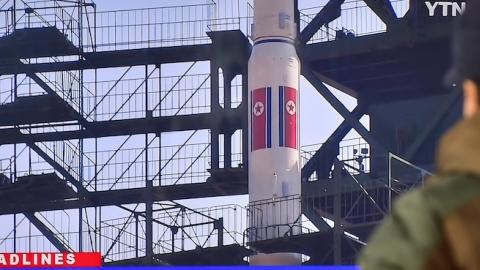North Korea's latest round of nuclear and missile tests has set off alarm bells around East Asia, as well as in Washington.
South Korea and the United States have even entered into talks to deploy the U.S. Army's anti-missile system known as Thaad, or Terminal High Altitude Area Defense, which targets missiles in flight at high altitudes. Now there is talk Japan might do the same.
And no wonder. Kim Jong Un's missile arsenal has become as menacing as his nuclear arsenal. His Unha-3 ballistic missile, for example, which he used to launch a satellite into space in December 2012, has morphed into an ICBM capable of reaching California -- not to mention Tokyo and any other target in Japan.
To meet the North Korean threat, Japan already has the U.S.-built Patriot and Aegis anti-missile systems. Yet these systems, like Thaad, are designed to hit a missile during its final, or descent, phase, as it hurtles toward its target. At that close range, a miss or series of misses could mean catastrophe, especially if there's a nuclear device on the missile's tip. Even more disturbing, none has been tested against a long-range ballistic missile like the Unha-3.
Yet, there is a simpler way to stop the missile, in its earlier boost stage instead -- and Japan could soon have the means at its fingertips.
While they're hot
Large, multistage rockets require high-thrust booster engines to push them out of the atmosphere, which then drop away when the missile achieves the mid-course portion of its trajctory. Theoretically, destroying a missile in the boost phase has all kinds of advantages. Since it is the red-hottest stage of a ballistic missile launch, it is the easiest for infrared sensors to detect and identify. It is also the slowest phase of its flight, so the missile loses any advantage it might have in terms of speed in its later descent.
Above all, a boost-phase intercept, or BPI, doesn't allow time for the missile to take evasive countermeasures, which the latest North Korean missiles can be designed to do, which make shooting them down in the later, faster stages of their flight that much harder.
How would such a BPI work? First, it would not operate from a ground- or sea-based system like Thaad or Aegis, but from an unmanned aerial vehicle stationed at an altitude of 55,000 feet (16,764 meters) and equipped with infrared sensors able to detect a missile launch from 350 miles (563km) outside North Korean airspace. Launching interceptors from high-altitude UAV's also avoids a lot of atmospheric drag, increasing the interceptor's velocity and range."
Secondly, the UAV would be equipped with an agile anti-missile interceptor of 225kg or more -- more than enough firepower to bring down a large ICBM like the Unha-3 or its variants. Once a rogue launch had been detected, the interceptor's 3.5km-per-second velocity would give the UAV's ground operators nearly a minute to decide to intercept. That is more than enough time to prevent a mistake. And since there are already American-built UAVs capable of carrying up to four interceptors of this size, the chances that Kim's missile could evade destruction and get into orbital flight, shrink to almost nil.
At the same time, using a rotating series of UAVs on patrol off the North Korean coastline would mean constant surveillance and detection coverage for all of Japan.
Here, now
This isn't science fiction or laboratory theory. As the former science and technology director of the Pentagon's Ballistic Missile Defense Agency Leonard Caveny has pointed out, all the technologies for an operating BPI system not only exist, but have been tested and qualified for use. Indeed, a boost-phase interception system was successfully tested in December 2007, using a Sidewinder-derived missile fired from an F-16 fighter. There is no reason why a similarly derived missile couldn't work from a high-altitude unmanned platform.
The U.S. is working on a similar UAV missile-intercept system using lasers, but it could be a half-decade or more before it sees practical application. Since BPI relies on proven technologies, Japan could take the lead in developing the system now, using U.S.-built UAVs, with Japanese companies building the interceptor's motors, sensors and other components. Leonard Caveny has estimated the system could be ready for testing in 18 months at minimal cost, perhaps no more than $20 million.
That seems a small price to pay for acquiring a powerful tool for protecting Japan from missile or nuclear attack. It would also come with two geopolitical advantages: While easily deterring boost-phase ballistic missile launches from North Korea, BPI would not be feasible for doing the same for launches from the large land mass of China, thus reassuring Beijing that the system is not aimed at it. And if a shoot-down did become necessary, any debris will fall into the Sea of Japan instead of into South Korea or Japan itself.
Once successfully tested, a Japan-designed BPI system could be a game-changer in the effort to halt North Korea's nuclear blackmail. The U.S. could look into deploying such a system to prevent attacks on California or Hawaii, not to mention U.S. bases in the eastern Pacific. Turkey and Europe would see a working BPI system in the same way, as a means to prevent nuclear blackmail by Iran.
It's not often that a lethal military technology can be redesigned and redeployed to save lives and prevent nuclear disaster. A Japanese government that takes UAV-based BPI seriously could make East Asia rest easier, and help make the threat of rogue ballistic missile attacks a thing of the past.



















